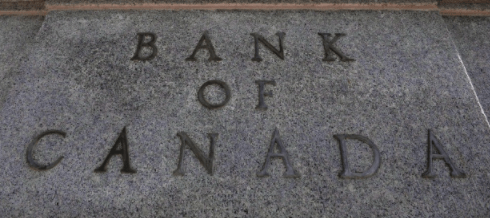Bank of Canada
The Bank of Canada is the central bank of Canada and serves as the primary financial and monetary institution in the country. Created in 1935, the bank is headquartered in Ottawa, Ontario and services thirteen provinces and territories. Its mission is to “promote the economic and financial welfare of Canada” by controlling monetary policy, administering management of government funds, and ensuring financial stability through the pursuit of low inflation and a stable supply of currency.
Purpose of the Bank of Canada
 The Bank of Canada controls financial and monetary management of policy throughout Canada. The bank has a general mission statement, but in practice its utilization is more limited to maintain a specific inflation rate window of between 1% and 3% (as determined by the country’s Consumer Price Index). This is in contrast to the dual mandate of the Federal Reserve System and other central banks.
The Bank of Canada controls financial and monetary management of policy throughout Canada. The bank has a general mission statement, but in practice its utilization is more limited to maintain a specific inflation rate window of between 1% and 3% (as determined by the country’s Consumer Price Index). This is in contrast to the dual mandate of the Federal Reserve System and other central banks.
The Bank of Canada manages this effort primarily through the interest rate, which is the amount it costs to borrow money from the government. Setting the interest rate determines how expensive it is to borrow money, which in turn affects the money supply and impacts foreign exchange as well as inflation.
The Bank rarely intervenes in the foreign exchange market. This has been the ongoing policy since 1998, meaning that the Bank only engages in active monetary policy involving currency in extreme situations. As such, the Canadian dollar (CAD) is impacted value-wise by market laws of supply and demand and not active government manipulation.
Bank of Canada Structure
Like the Federal Reserve System and the European Central Bank, the Bank of Canada is an independent institution in that it is not a government department. It is, however, owned by the government and there are more links to the government than there are with the Federal Reserve.
For example, the Governor of the Bank of Canada – currently Mark Carney – is appointed by the Bank’s Board of Directors, a part of the government. Shares are also held by the Ministry of Finance, and the bank’s actions are audited by an external agency appointed by the Cabinet and effectively with the consent of the Minister of Finance.
The Bank is overseen by a Board of Directors, which appoints the Governor. The Governor serves for a seven-year term, can be dismissed from office by the Canadian government, and operates more or less independently from the government when setting monetary policy.
Impact of the Bank of Canada on Forex Trading
The Bank has less impact on forex trading than other central banks. For starters, the Canadian dollar (also called the loonie) is not considered a major currency on the level of the dollar, euro, or pound. It is important, though, to several major trading partners, namely the United States.
Another reason is because the bank is practically limited in what it can do to impact the value of the currency. Other central banks intervene in the markets and actively manipulate the value of their respective currencies, but the Bank of Canada does so only rarely.
Nevertheless, traders frequently consult announcements and proclamations from the Bank in regards to CAD and its major currency trading partner, USD.



























Comments (0 comment(s))